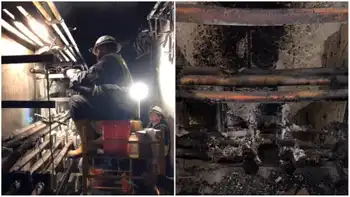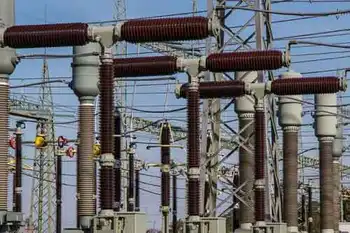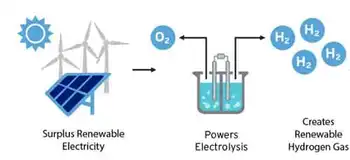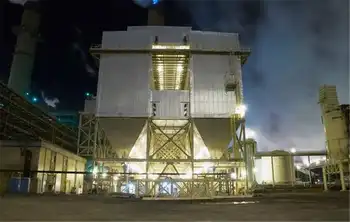Power station plan is proposed for West Allenton Road - Neighbors take on National Grid
NORTH KINGSTOWN, RHODE ISLAND - Like many of her neighbors, Julie Maloney lost power during a blistering run of 90-degree days earlier this month.
"We need power," she said. "That's a given."
But Maloney doesn't want National Grid to build an electric substation in the neighborhood along West Allenton Road, where American flags fly from well-kept ranch houses. A yellow caution sign on Pinecrest Drive - where Maloney lives - tells drivers they are entering a "kid zone".
Maloney fears a power station would drive people away, sink property values and pose a danger to the 42 children who live on the street. Allowing a power station in a residential zone would set a bad precedent, she says.
National Grid officials disagree.
Frederick Mason, National Grid's vice president of business services, says the proposed substation would be heavily protected by a cyclone fence topped with barbed wire; part of the equipment would be housed in a locked building with warning signs and alarms.
Few people would see the station because it would occupy a small part of the company's 13-acre site off Tower Hill Road, he says. The building would be hidden by a high berm, trees and shrubs.
On Pinecrest Drive, the closest home to the substation would be about 700 feet away, he says.
"We wish we had more sites like this," he says. It's shielded by vegetation and off the beaten path. When the construction is done this will be a facility people will not mind having - especially on hot days."
The clash between the power company and some of its customers is expected to heat up this month.
Both the Zoning Board of Review and the Town Council are scheduled to discuss the project.
The two boards will advise the Rhode Island Energy Facility Siting Board, which will make the final decision on the site.
National Grid won a partial victory earlier this month when the Planning Commission said the substation is consistent with the town's Comprehensive Plan. However, the board, in a 3-to-2 vote, added 16 conditions, some of them dealing with the concerns of homeowners. For National Grid to comply, it must keep residents informed of the company's construction schedule, and work with residents to lessen the impact of construction in the neighborhood.
The issue arose last summer when some residents received "Dear Neighbor" letters from the power company, then Narragansett Electric Company.
The company said it needed a new substation to meet an increased demand for electricity. Between 1996 and 2004, the consumption of electricity in southern Rhode Island jumped 29 percent, the company said.
Along with the new substation, another 101 poles and more than seven miles of transmission lines would be needed to bring 115,000 volts to the new station. To make room for the new poles, the company would remove some trees along a right of way that runs behind some streets.
In response, Maloney and other residents formed CONTACT, or Coalition of Neighbors to Affect Change Together. The group elected officers and started collecting data in three-ring binders.
Last month, the group sent letters objecting to the site to planning and zoning officials.
"Given the residential zoning of the land, we never could have imagined that a project of this magnitude would be legally possible," they wrote. The project poses health risks and hazards such as large electric poles that would "adversely affect quality of life and property values," they said.
"In the short term this affects our neighborhood, but if approved, would establish a precedent that could affect any residential neighborhood."
National Grid officials say the substation is needed because the company's three older substations in North Kingstown and South Kingstown are straining to service the area.
According to Mason, the peak demand for electricity in southern Rhode Island will increase by 19 percent in the next six years.
The substations are working "at capacity or above capacity," he says. When temperatures soar, customers turn on their air- conditioners and fans, creating peak demand. Transformers overheat and residents lose power, Mason says.
This summer has been especially tough, says National Grid spokesman David Graves.
From mid July through early August, the company experienced 40 power failures because of violent storms and high heat. More than 100 crews repaired broken lines or rerouted electricity from other stations, says Graves.
On Aug. 2, a day when the temperature hit 100 degrees in some places, 9,300 North Kingstown customers lost power during 12 separate failures, says Graves.
Many of them were in the southern end of North Kingstown, where officials want to build the new substation, he says.
The company earlier looked at several other sites in the south end of town, but one included wetlands and another would have simply placed the substation next to a different neighborhood, Mason says. In the end, the site near Tower Hill Road proved to be the best, in part because its on land the company has owned for 50 years, he says. "We're trying to minimize the controversy, the inconvenience and the cost."
Related News

Investigation underway to determine cause of Atlanta Airport blackout
ATLANTA - Power has been restored at the world’s busiest airport after a massive outage Sunday afternoon left planes and passengers stranded for hours, forced airlines to cancel more than 1,100 flights and created a logistical nightmare during the already-busy holiday travel season.
An underground fire caused a complete power outage Sunday afternoon at Hartsfield-Jackson Atlanta International Airport, resulting in thousands of canceled flights at the world's busiest terminal and affecting travelers worldwide.
The massive outage didn’t just leave passengers stranded overnight Sunday, it also affected travelers with flight Monday morning.
According to Paul Bowers, the president and CEO of Georgia Power, “From…




